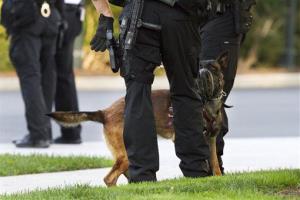Secret Service Blunders

(AP Photo/Jacquelyn Martin)
http://www.nytimes.com/2014/11/14/us/series-of-secret-service-blunders-eased-way-for-white-house-intruder.html?smid=tw-share
By:
1) What is an appropriate punishment for the security guards at fault? Who else might be responsible? How do you know? Why does a president need so much protection? Does President Obama deserve more than predecessor or successor? Why or why not?
2) How might the Secret Service have a different viewpoint than the Department of Homeland Security on the steps to prevent these types of incidents? How do you think President Obama's family members feel about this incident?
3) Has this ever happened before? In other countries? Who else deserves police protection? Celebrities? Their children? Why might Alex form Target? Who should pay?
4) How could this story have been different? What would happen if the Secret Service had a new oath? What if a member of the Secret Service is not a supporter of the President's policies?
5) What are the long term effects of this report? Can anyone be protected all the time? What would you give up for constant police protection?
Extension Activities:
1) Students can trace the development of the Secret Service as an organization and outline how methods of protection and responsibility have changed.
2) Students can create a myths vs facts about the lives of the President's children and imagine how they might feel under constant protection.

No comments:
Post a Comment